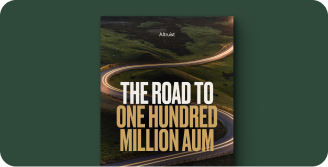In the vast, ever-evolving digital landscape, financial advisors must harness the power of every tool within their reach to connect with potential clients. One such tool is Google Ads, a powerful platform that can catapult visibility and attract a laser-focused audience.
Benefits of Google Ads for Financial Advisors
There are many advantages of Google Ads for financial advisors. Precise targeting, ensuring your ads resonate with the right audience at the opportune moment. It's also a cost-effective strategy, as you only pay when an interested party clicks on your ad. Moreover, Google Ads provides tangible results, empowering you to track the efficacy of your campaigns and make informed decisions based on data.
Imagine a financial advisor who leveraged Google Ads to target local clients intrigued by retirement planning. By employing specific keywords and localized targeting, they witnessed a surge in their client base within six months.
A few data points to help set the context:
- There are over 3.5 billion searches per day on Google.
- 43% of investors who are under 45, and have $500k in investable assets, start their searches online.
- Mobile searches for "financial advisor" have grown 75% over the last two years.
- Businesses make an average of $2 in revenue for every $1 they spend on Google Ads.
Simplifying Google Ads for Financial Advisors
Google Ads connects financial advisors with potential clients actively seeking financial guidance. The concept might initially seem complex, but grasping its fundamental principles can demystify the process, illuminating its potential as a formidable tool in your marketing toolkit.
The Pay-Per-Click Model and Audience Targeting
Google Ads operates on a pay-per-click (PPC) model. This means you only pay when a user clicks on your ad. This makes Google Ads a cost-effective strategy for businesses mindful of their marketing budget. You retain control over your ad spend, adjusting your budget based on your campaigns' performance.
Another key feature of Google Ads is its ability to target specific audiences. You can customize your ads to reach potential customers based on various factors such as their location, age, interests, and even the type of device they're using. This precision allows you to concentrate your efforts on the audience most likely to be interested in your services, thereby enhancing the efficiency of your campaigns.
Keywords and return on investment
Google Ads also offer keyword targeting. This powerful feature allows your ads to appear in search results when users search for specific words or phrases related to your services. Choosing the right keywords ensures that your ads reach people when they're looking for the services you offer.
Monitoring and optimization
It's important to remember that Google Ads isn't a "set it and forget it" type of platform. It requires monitoring, analysis, and optimization to ensure your campaigns perform well and deliver the desired results. Google Ads provides a wealth of data that you can use to measure the success of your campaigns and make informed decisions.
Understanding the Basics: How Google Ads Work
At its core, Google Ads operates on a pay-per-click model, where advertisers bid on keywords that resonate with their target audience. When users search for these keywords, Google showcases the most relevant ads with the highest bid.
Three fundamental elements of Google Ads are:
- Keywords are the pinnacle of your Google Ads campaign. They're the words or phrases that users type into the Google search bar when they're looking for information, products, or services. When setting up your Google Ads campaign, you select keywords that align with your business and services. When users search for these keywords, your ad has the potential to appear in their search results.
Selecting relevant and effective keywords is crucial as it determines the visibility of your ads to potential clients. Google Ads is not just about choosing high-volume keywords; it's about selecting the ones your target audience will likely use when they're ready to engage with a financial advisor. - Bidding specifies the maximum amount you'll pay for a click on your ad. This bid is your stake in the competition for ad space. However, it's important to note that the highest bid sometimes fails to win. Google also considers the quality of your ads and landing page when determining which ads to display.
This system, known as the Ad Rank, ensures users see high-quality, relevant ads that provide value. It's not just about how much you're willing to pay; it's about the overall value you offer the user. - Targeting is the tool that allows you to hone in on your ideal audience. It enables you to specify who sees your ads based on various parameters such as location, age, interests, and even the type of device they're using. This level of precision allows you to focus your marketing efforts on the audience most likely to be interested in your services. It's not just about reaching a wide audience; it's about reaching the right audience.
Compliance and Google Ads: What Every Financial Advisor Needs to Know
In financial services, compliance isn't just important—it's essential. As a financial advisor, you're tasked with guiding your clients toward their financial goals and ensuring that every step you take aligns with the regulatory standards set by governing bodies. This commitment to compliance extends to your marketing efforts, including your Google Ads campaigns.
Understanding the potential risks associated with financial services, Google has instituted specific policies to safeguard users from deceptive or harmful financial practices. These policies cover a broad range of areas, from the transparency of your services to the accuracy of your claims.
Transparency
Google requires that your ads and landing pages provide clear, accurate, and comprehensive information about your services, fees, associated risks, and other relevant details. This transparency helps users make informed decisions and builds trust in your services.
Prohibited Practices
Google prohibits certain practices in financial services ads. These include but aren't limited to guaranteeing profits, promoting high-risk investments without disclosing the risks or using aggressive or high-pressure sales tactics.
Claims and Testimonials
Any claims made in your ads must be factual and verifiable. Testimonials must reflect the typical experiences of your clients, not just the best-case scenarios. Misleading or exaggerated claims can lead to penalties or suspension. Use of testimonials must also be allowed by and align with your firm’s Compliance policies. FYI, some states have not yet aligned with the SEC's updated marketing rules/allowed RIAs to use testimonials, so be sure to check in state.
Regulatory Compliance
Your ads and landing pages must comply with all applicable laws and regulations in the regions where you're advertising. This includes obtaining any necessary licenses or registrations and adhering to any advertising restrictions imposed by regulatory bodies that govern your firm’s business practices.
Data Collection and Privacy
If your landing pages collect personal information from users, your firm’s Privacy Policy must disclose how you'll use it, who will have access to it, and how users can opt-out. Your Privacy Policy must also align with all applicable data privacy laws and regulations.
Staying compliant with Google's and Regulatory requirements isn't just about avoiding penalties—it's about creating a safe, trustworthy environment for your potential clients. By aligning your Google Ads campaigns with these policies, you safeguard your business and reinforce your commitment to your client's best interests.
Crafting Engaging Ads: 5 Tips for High-Converting Calls to Action
A persuasive call-to-action (CTA) can dramatically boost ad conversions. Here are five tips for developing effective CTAs:
- Be clear and concise: Your CTA should be a beacon, guiding users to the action you want them to take.
- Use action words: Verbs like "discover," "learn," and "start" can galvanize users to take action.
- Create a sense of urgency: Phrases like "limited time offer" or "schedule a consultation today" can spur users to act posthaste.
- Make it personal: Using words like "you" and "your" can make your CTA more engaging and relatable.
- Test and optimize: Experiment with different CTAs to unearth what resonates best with your audience.
Measuring Success: How to Analyze and Optimize Your Google Ads
Google Ads offers a treasure trove of data to measure the success of your campaigns. Key performance indicators (KPIs) include click-through rate (CTR), conversion rate, and cost per conversion. If your ads are underperforming, you can tweak your keywords, targeting, or ad copy to enhance these metrics.
Remember, the journey to a successful Google Ads campaign is a marathon, not a sprint. It's about consistent monitoring, analysis, and optimization. It's about understanding what works for your target audience and refining your strategies based on that understanding.
Google Ads is more than just a tool; it's a powerful ally that can help financial advisors reach more potential clients, elevate their visibility, and expand their business. Financial advisors can unlock the full potential of Google Ads by mastering the basics, adhering to compliance, scrutinizing performance, and crafting engaging ads.
To learn about creating Facebook Ads, visit this in-depth article. To learn more about digital marketing, click here.














